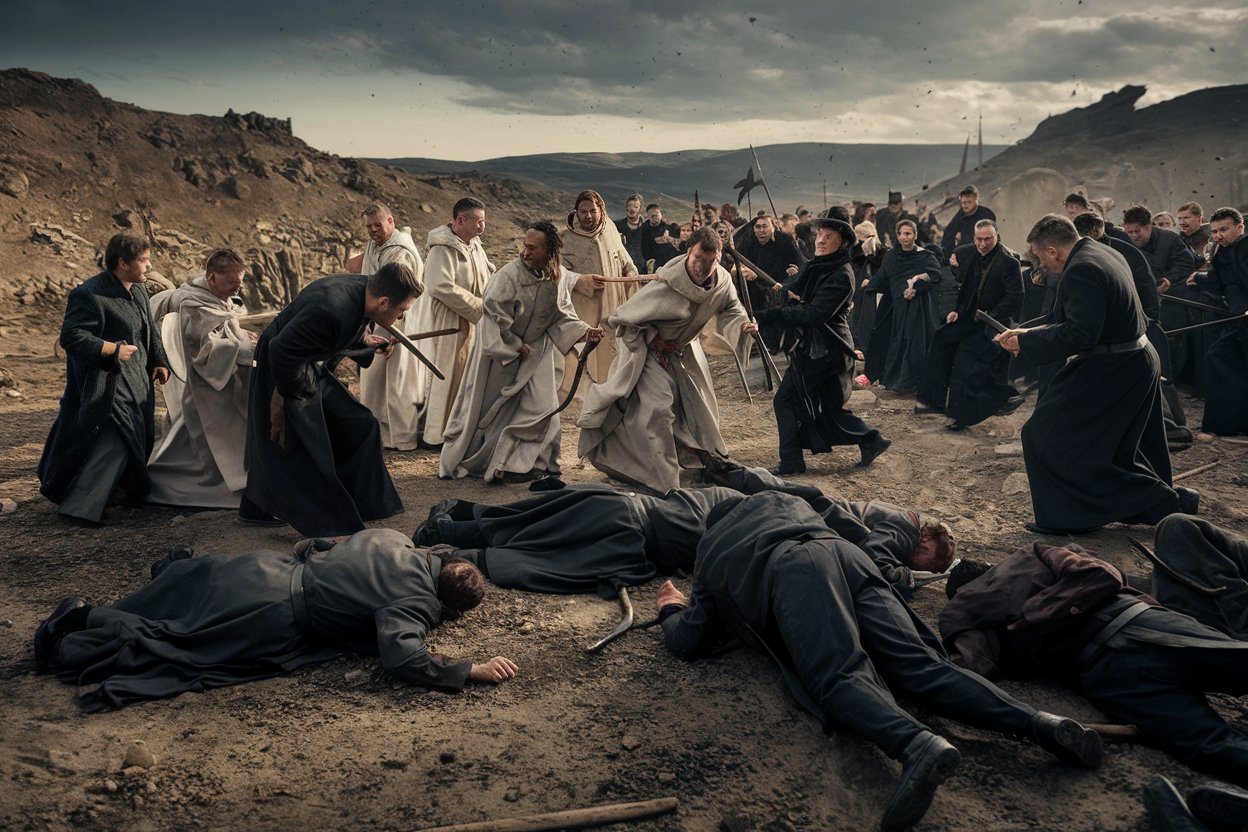
What was the War of the Priests? The War of the Priests refers to a series of conflicts between religious factions in medieval Iceland. These battles, occurring during the 13th century, were primarily fueled by power struggles among chieftains and clergy. The disputes often revolved around control of church lands and influence over local communities. This turbulent period saw alliances shift frequently, with various leaders vying for dominance. The war significantly impacted Icelandic society, leading to changes in governance and the eventual establishment of a more centralized church authority. Understanding this conflict provides insight into the complex interplay between religion and politics in medieval Iceland.
Key Takeaways:
- The War of the Priests, a 13th-century conflict in Iceland, shaped the country's history and led to its eventual loss of independence to Norway. It highlighted the influence of power, religion, and politics in medieval society.
- The War of the Priests, also known as the Sturlungaöld, was a power struggle involving chieftains and religious leaders in Iceland. It led to the collapse of the Icelandic Commonwealth and its integration into the Norwegian Crown.
The War of the Priests: An Overview
The War of the Priests, also known as the "Sturlungaöld," was a series of conflicts in Iceland during the 13th century. This period was marked by power struggles among chieftains and religious leaders. Here are some fascinating facts about this turbulent time.
- The War of the Priests took place between 1238 and 1240.
- It was part of a larger period of civil strife known as the Age of the Sturlungs.
- The conflict primarily involved two powerful families: the Sturlungs and the Ásbirnings.
- The war was named after the prominent role played by clergy members.
- Iceland was still a commonwealth during this period, without a king.
- The conflict was partly fueled by the desire for control over the church and its resources.
- The war ended with the Battle of Örlygsstaðir in 1238, a decisive victory for the Ásbirnings.
Key Figures in the War of the Priests
Several notable individuals played crucial roles in the War of the Priests. Their actions and decisions shaped the course of the conflict.
- Snorri Sturluson, a famous poet and historian, was one of the key figures.
- Þórður kakali Sighvatsson, a member of the Sturlung family, led many battles.
- Kolbeinn ungi Arnórsson, a chieftain of the Ásbirnings, was a significant leader.
- Bishop Guðmundur Arason, known for his piety, was involved in the conflict.
- Sighvatur Sturluson, Snorri's brother, also played a prominent role.
- Þórður's leadership was instrumental in the Sturlungs' initial successes.
- Kolbeinn's strategic acumen led to the Ásbirnings' ultimate victory.
Major Battles and Events
The War of the Priests saw several key battles and events that determined its outcome. These moments were pivotal in the struggle for power.
- The Battle of Örlygsstaðir was the largest and most decisive battle.
- The Battle of Bær in 1240 marked the end of the conflict.
- The Siege of Flugumýri in 1253 was a significant event during the Age of the Sturlungs.
- The burning of Flugumýri was a brutal act that shocked many.
- The Battle of Haugsnes in 1246 was another major conflict during this period.
- The conflict saw the use of traditional Viking warfare tactics.
- Many battles were fought over control of strategic locations and resources.
The Role of the Church
The church played a significant role in the War of the Priests. Its influence and resources were a major factor in the conflict.
- The church owned vast amounts of land and wealth in Iceland.
- Clergy members often acted as mediators and negotiators.
- Bishop Guðmundur Arason's support was crucial for the Sturlungs.
- The church's involvement added a religious dimension to the conflict.
- Many chieftains sought to control church lands and resources.
- The church's influence extended to both political and social spheres.
- Religious leaders often had their own private armies.
The Aftermath and Legacy
The War of the Priests had a lasting impact on Icelandic society and history. Its legacy can still be felt today.
- The conflict weakened the Icelandic Commonwealth, leading to its eventual collapse.
- Iceland became part of the Norwegian Crown in 1262, ending its independence.
The War of the Priests remains a significant chapter in Icelandic history, illustrating the complex interplay of power, religion, and politics during the medieval period.
Final Thoughts on War Of The Priests
War Of The Priests is a fascinating chapter in history. It highlights the power struggles and religious conflicts that shaped societies. This conflict, rooted in deep-seated beliefs and political ambitions, had far-reaching consequences. Understanding these facts helps us appreciate the complexities of historical events and their lasting impact.
From the key players to the pivotal battles, each fact adds a layer to our comprehension of this period. It's not just about dates and names; it's about the human stories and the cultural shifts that occurred.
By delving into these details, we gain a richer perspective on how history unfolds. War Of The Priests serves as a reminder of the intricate web of factors that drive historical change. Keep exploring, and you'll uncover even more intriguing aspects of our past.
Frequently Asked Questions
Was this page helpful?
Our commitment to delivering trustworthy and engaging content is at the heart of what we do. Each fact on our site is contributed by real users like you, bringing a wealth of diverse insights and information. To ensure the highest standards of accuracy and reliability, our dedicated editors meticulously review each submission. This process guarantees that the facts we share are not only fascinating but also credible. Trust in our commitment to quality and authenticity as you explore and learn with us.
